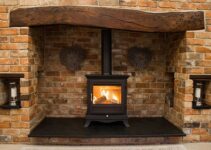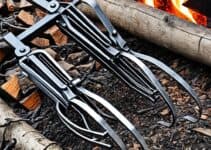Removing an old wood burning stove doesn’t need to be a complicated job. Provided you’re aware of what parts are joined together, it basically boils down to disconnecting them.
However, there can be some risks involved depending on how the wood burner was installed.
In this article, we’ll answer the question, how do you remove an old wood burning stove? We’ll cover the steps, considerations, and any potential risks for taking care of this job.
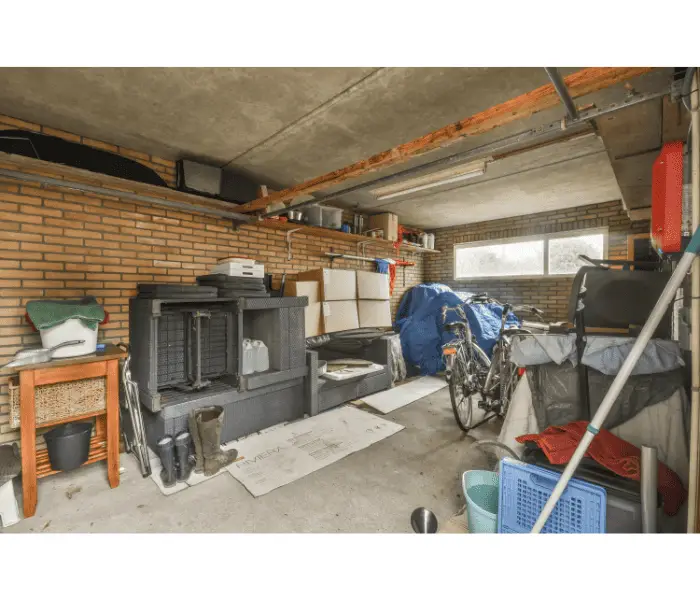
How Do You Remove an Old Wood Stove?
There are only 3 main steps to removing an old wood stove. However, you’ll want to assess the stove, chimney, and flue pipe before you start work.
If you notice any signs of damage to the chimney or surrounding brickwork, it’ll probably be worth calling a professional.
But if you’re happy that everything looks safe, first gather the following:
· At least 1 extra person
· Tarps
· Hammer
· Screwdriver
· PPE (gloves, mask, glasses)
Then, the steps are as follows:
1. Prepare the Stove
Make sure the wood burner is completely cool before doing anything. Clean it as much as possible using a vacuum cleaner or brush.
Once you’ve done that, remove as many parts of the wood burner as you can. This might include the ash pan, doors, or anything else that’s screwed on.
Lay down some tarps around the fireplace to protect your flooring and make clean up easier.
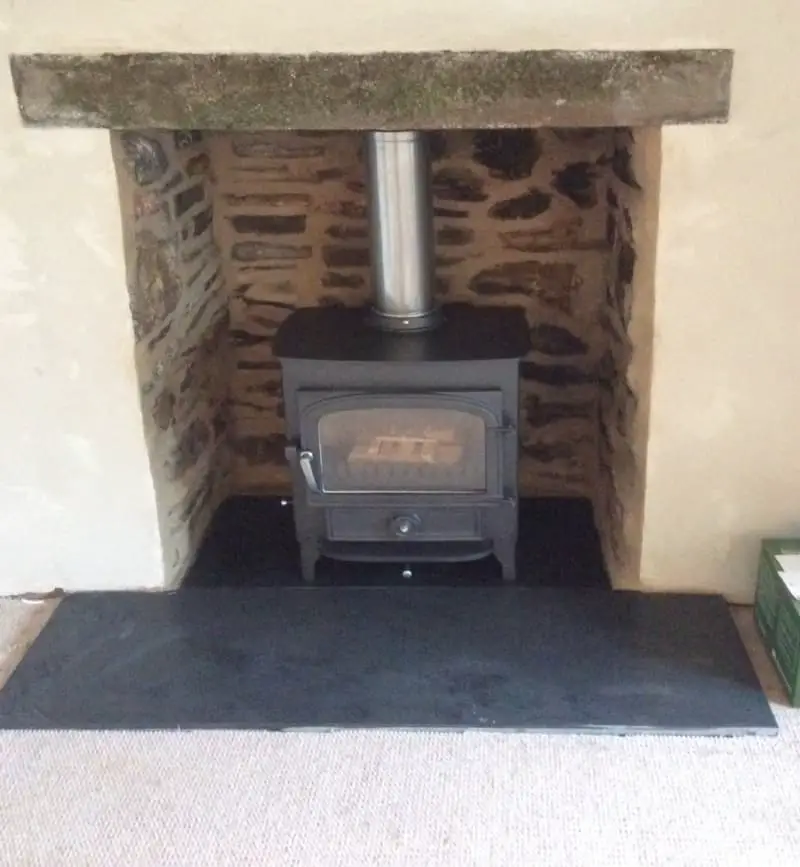
2. Disconnect the Stove
The stove itself will be connected to the chimney via its flue pipe. Depending on how it was installed, these connections may involve fireplace cement or a similar product.
Unsurprisingly, these are pretty durable and can be difficult to remove. However, parts of the chimney liner should be in sections, so at some point there won’t be any cement.
If there isn’t any cement, it’ll be as simple as lifting the flue pipe off the stove. However, if there is, you’ll basically need to chip away at it with a hammer and chisel because there isn’t an easier way to remove it.
However you tackle this job, it comes down to separating the wood stove from the chimney. Provided you’re happy everything is well built and secure, you can be a bit rough with this step.
If you’re planning to repurpose the wood burner, try and avoid damaging it.
As you ease the flue pipe away from the chimney, try to cap the chimney with a plastic bag or similar. This’ll help prevent debris from falling into the room.
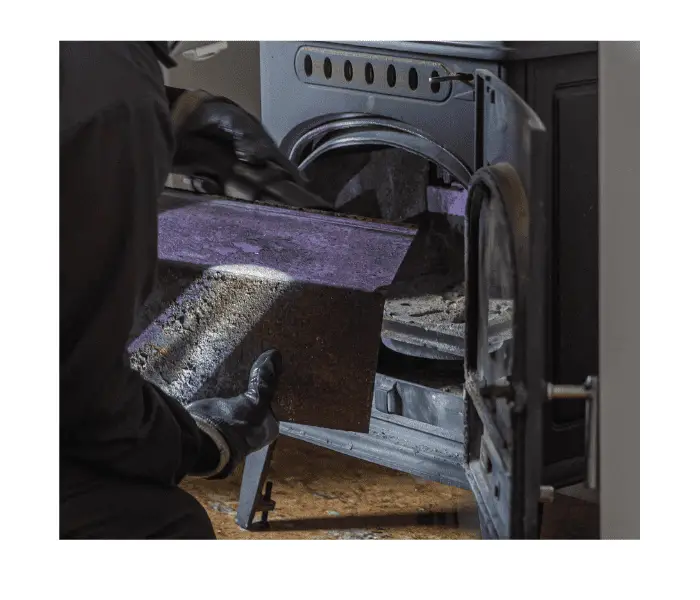
3. Remove the Wood Burner
Everything should now be disconnected enough for you to remove the wood burner from the hearth. We won’t cover this in much detail because we have a full article on how to move a wood burner, so check that out.
Just make sure you’ve got some help because wood burners can be heavy.
Risks of Removing a Wood Burner
As long as you know the risks of removing a wood burner yourself, it should be a fairly safe job.
This is why you should assess the setup before starting because identifying potential dangers can save you a lot of money in the long run.
Some of the main risks are:
· Damaged chimney. If the chimney is damaged, removing the wood burner can make it worse. The worst-case scenario is that the extra movement causes it to crumble, which can be expensive to fix.
· Heavy wood burner. This shouldn’t be too shocking if you’ve ever tried to lift a stove before. They’re heavy, so make sure you have at least one helper on hand for removal.
· Excess debris. Even if you’ve had your chimney cleaned, removing the flue can cause a lot of debris to fall down. Be ready for this and make sure you’re wearing eye and mouth protection.
· Damaging the hearth or building. If you’re really clumsy, you could end up causing damage around the hearth or the room containing the fireplace. It’s a fairly low risk, and hopefully you’d be self-aware enough to not even try removing the wood burner.
Provided you’re careful and methodical in your stove removal, you should be able to avoid all of these issues.
How Much Does It Cost to Remove a Wood Burning Stove UK?
The cost of removing a wood burning stove can vary massively, but a rough ballpark figure is £500-2,000.
It’s such a big range because the higher end will include chimney capping or removal and hearth capping, for example.
Most companies should offer a disposal service, too, although you can obviously keep the wood burner if you choose. Just be sure to discuss this with your chosen contractor before they start.
Wood Burning Stove Removal Service
If you decide to hire a contractor, they’ll basically follow the steps given above. They’ll come to assess the job first to give you a quote and understand the scope of the work.
While it might seem like an expensive job, it can make sense to hire a contractor over doing it yourself.
Of course, if you installed the wood burner yourself then you should have a good idea of how to take it out again (it’ll just involve following the steps in reverse).
However, if you didn’t fit it then it makes sense to get professionals to remove it. Taking out a wood burner can become a messy and long-winded job if you’re not sure what you’re doing.
Have a quick Google to see what services are available in your area and make sure you get quotes from a few before settling on one.
Final Thoughts On Removing an Old Wood Burning Stove
In theory, removing an old wood burning stove doesn’t need to be difficult.
The hardest part will be disconnecting it from the chimney, but this depends on how they’re fitted together.
Have a go if you feel confident and know your way around a set of tools.
However, don’t be afraid to call a professional team in to remove your old wood burner, as it can quickly become a regrettable job!
